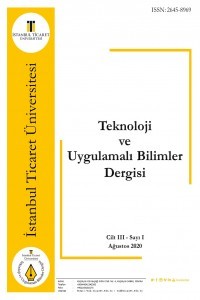İSTANBUL’DAKİ PAYLAŞIMLI OFİS ALANLARININ SUNDUKLARI HİZMETLER VE TASARIM ÖZELLİKLERİ
Son yıllarda hızla gelişen teknoloji ve esnek çalışma hayatı, geleneksel ofis türlerinin değişen talebi karşılayamamasına neden olmaya başlamıştır. Özellikle serbest çalışan freelance kişiler veya çalışmak için mesai saatlerine bağlı kalmak zorunda olmayan kişi ve şirketler için alternatif ofis mekânları ortaya çıkmaya başlamıştır. Saatlik, günlük, haftalık, aylık veya yıllık şekilde kiralanan ve ortam ve saat konusunda çalışma serbestliği sunan bu ofis mekânları, kullanıcılarına başta düşük maliyet olmak üzere pek çok avantaj sağlamaktadır. “İşbirliği içinde çalışmak” anlamına gelen coworking kelimesine dayanan “coworking spaces” – “paylaşımlı ofis” modeli, bu türden ofis mekânlarına en iyi örnektir. Paylaşımlı ofis modeli ile farklı sektörlerde çalışan kişilerin birbirinden bağımsız olarak çalışırken aynı zamanda da paylaşımlı ortak alanlarda bir araya gelerek sinerji yaratmaları amaçlanmaktadır
Anahtar Kelimeler:
Coworking, ofis tasarımı, paylaşımlı ofis
Services and Design Features of Shared Office Spaces in Istanbul
In recent years, rapidly developing technology and flexible working life has caused traditional office types to not meet the changing demands. Alternative office spaces have begun to spread, especially for freelancers or people and companies who do not have to depend on working hours to work. These office spaces, which are rented on an hourly, daily, weekly, monthly or yearly basis and which offer freedom to work on the environment and hours, offer many advantages to their users, especially at low cost. The coworking office model, which means "working collaboratively", is the best example of this kind of office space. With the coworking office model; it is aimed to create synergy by bringing together people in different sectors who have similar minds working independently from each other and at the same time in shared common areas.
Keywords:
Coworking office space, office design,
___
Laing, A. & Bacevice, P. A. (2013). Using design to drive organizational performance and ınnovation in the corporate workplace: Implications for ınterprofessional environments. Journal of Interprofessional Care, 27(2), 37-45.ARKİV Workinton, (2018). Workinton Levent 199. En son erişim tarihi: 3 Mayıs 2018, http://www.arkiv.com.tr/proje/workinton/5888
ARKİV, (2018). Arkitera Mimarlık Merkezi. Dijital Mimarlık Arşivi, http://www.arkiv.com.tr/
ARKİV Atölye, (2018). Atölye İstanbul. En son erişim tarihi: 1 Mayıs 2018, http://www.arkiv.com.tr/proje/atolyeistanbul/5457
ARKİV Habita, (2018). Habita Paylaşımlı Ofis. En son erişim tarihi: 3 Mayıs 2018, http://www.arkiv.com.tr/proje/habita-paylaşımlı ofis/7222
Atölye, (2018). En son erişim tarihi: 1 Mayıs 2018, https://atolye.io/tr/calisma-alani/ Coworking İstanbul, (2018). En son erişim tarihi: 10 Mayıs 2018, http://coworkingistanbul.com/#/
Foertsch, C. (2018). 1.7 Million members will work in coworking spaces by the end of 2018. DESKMAG. En son erişim tarihi: 10 Mayıs 2018.
Fuzi, A., (2015). Coworking spaces for promoting entrepreneurship in sparse regions: the case of South Wales. Regional Studies, Regional Science, 2(1), 462-469.
Fuzi, A., Clifton, N., and Loudon, G. (2014). New in-house organizational spaces that support creativity and innovation: the co-working space. Paper presented at R&D Management Conference, Stuttgart, Germany.
Gandini, A. (2015). The rise of coworking spaces: A literature review. Ephemera: Leicester, 15(1), 193-205.
Gibson, V. A., & Lizieri, C. M. (1999). The role of serviced office space in office markets and corporate property portfolios. The Univesity of Reading, England.
Global Coworking Map, (2018). En son erişim tarihi: 10 Mayıs 2018, https://coworkingmap.org/
Green, R. (2014). Collaborate or compete: How do landlords respond to the rise in coworking?. Cornell Real Estate Revie, 12, 52-59.
Habita, (2018). http://habita.com.tr/ Kalkavan, N. M. (2017). Alternatif ofislerin geleceği ve gayrimenkul sektörü üzerindeki olası etkileri. Yüksek Lisans Tezi, İstanbul Teknik Üniversitesi, İstanbul.
Koevering, J. G. C. (2017). The preferred characteristics of coworking spaces the relation between user characteristics and preferred coworking space characteristics: an attribute based stated choice experiment. Master
Thesis, TU/E Technische Universiteit Utrecht, Eindhowen.
Laterveer, M. (2011). Serviced Offices; een dynamische markt in opkomst. Master Scriptie, Universiteit Utrecht, Nederland.
Lange, B. (2011). Re-scaling govermance in Berlin’s creative. Cultural Unbound, 3, 187-208.
Levent Ofis, (2018). Habita. En son erişim tarihi: 3 Mayıs 2018, https://www.leventofis.com/ortak-ofis
Levent, Ö. (2016). Ben Girişim: Habita – Ortak Yaşam Alanı. Çay Kahve İnsan, En son erişim tarihi: 5 Mayıs 2018, https://www.youtube.com/watch?v=vV3gh5Q9pPk&feature=youtu.be
Merkel, J. (2015). Coworking in the city. Ephemera: Theory & politics in organization, 15(1), 121-139.
Michael, S. (2002). The physical dimension of information space. Library Hi Tech, 20(1), 6-7.
Moriset, B. (2013). Building new places of the creative economy. Proceedings of the 2nd Geography of Innovation International Conference 2013, Utrecht University.
Moriset, B. (2014). Building new places of the creative economy. The Rise of Coworking Spaces. Proceedings of the 2nd Geography of Innovation, International Conference 2014, Utrecht University.
Reed, B. (2007). Co-working: The ultimate in teleworking flexibility. Network World, http://www.networkworld.com/news/2007/102307-coworking.html
Ross, P. (2006). Technology for a New Office. Worthington. J.(ed.) Reinventing the Workplaces, 2nd Edition, Amsterdam, 143-156.
Spinuzzi, C. (2012). Working alone, together: Coworking as Emergent collaborative activity. Journal of Business and Technical Communication, 26(4), 399-441.
Sykes, K. (2014). Coworking: a workplace paradigm shift. Contract, 55(6), 143-156. Workinton, (2018). https://www.workinton.com/
Workington Levent, (2018). İstanbul Avrupa: Workinton Levent 199. En son erişim tarihi: 3 Mayıs 2018, https://www.workinton.com/subeler/istanbul/levent
- Yayın Aralığı: Yılda 2 Sayı
- Başlangıç: 2018
- Yayıncı: İstanbul Ticaret Üniversitesi
Sayıdaki Diğer Makaleler
Tuğba VATAN, Vahit Ferhan BENLİ
İYİLEŞTİRİLMİŞ OTOMATİK ANAHTAR KELİME ÇIKARIMI BRAKE
Sina Ahmet BİRDEVRİM, Ali BOYACI, Dena Ahmed S. Al THANİ
İMAR BARIŞI’NIN GETİRDİKLERİ VE YAŞANABİLECEK AKSAKLIKLAR
Mustafa Hakan ÖZELMACIKLI, İbrahim BAZ
İSTANBUL’DAKİ PAYLAŞIMLI OFİS ALANLARININ SUNDUKLARI HİZMETLER VE TASARIM ÖZELLİKLERİ
Eda ÖZTÜRK, Elif Kısar KORAMAZ
ARAÇSAL AĞLARIN AFET SENARYOLARINDAKİ PERFORMANSLARININ KARŞILAŞTIRILMASI
Alper Kaan YILDIRIM, Ali BOYACI, Marwa QARAQE
GAYRİMENKUL SEKTÖRÜNDE DİJİTAL PAZARLAMADA ARAMA MOTORLARI REKLAMLARI
HİZMETLER SEKTÖRÜNE DÖNÜŞÜM SÜRECİNDE İSTANBUL’UN DEĞERLENDİRİLMESİ
